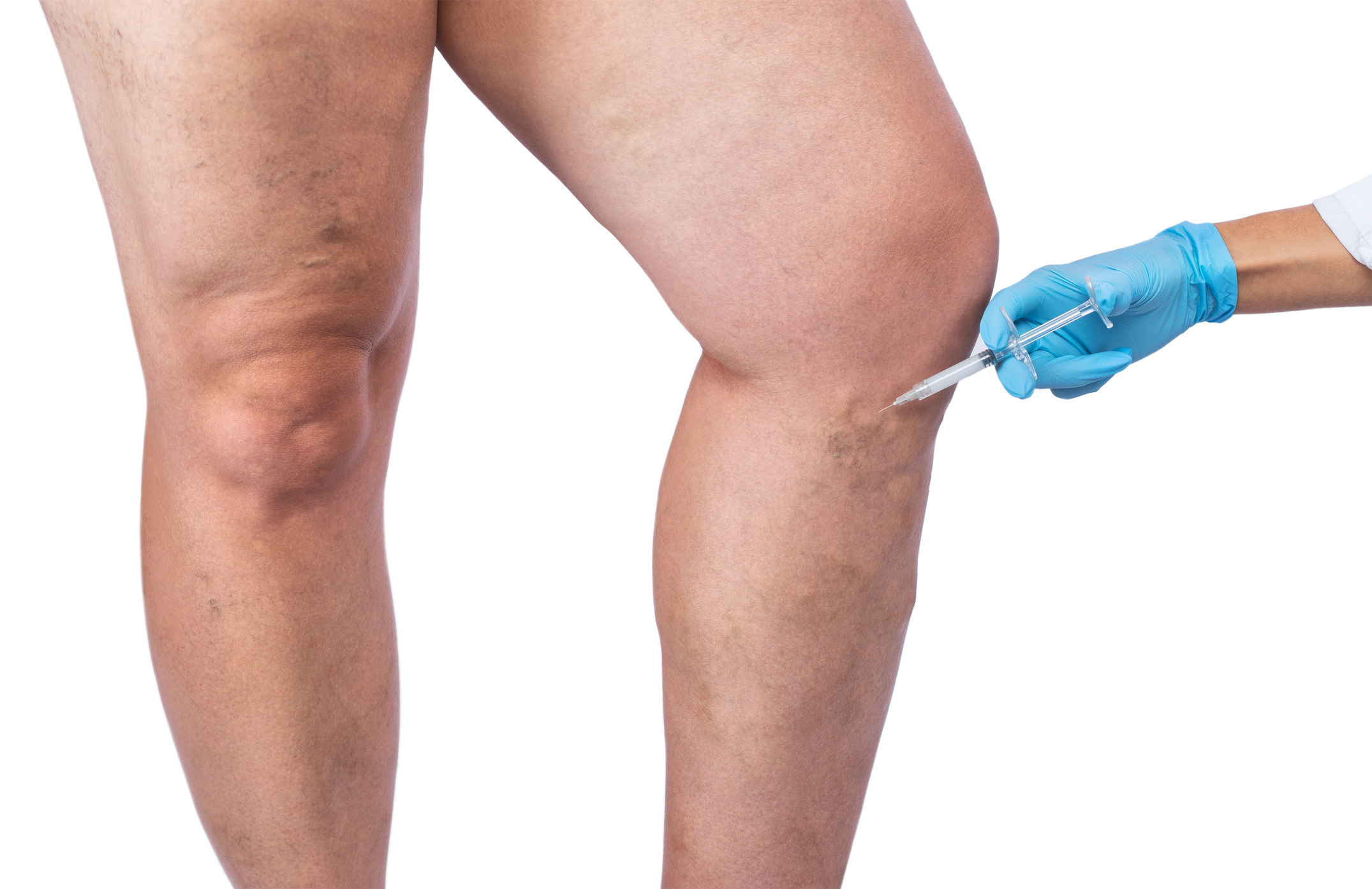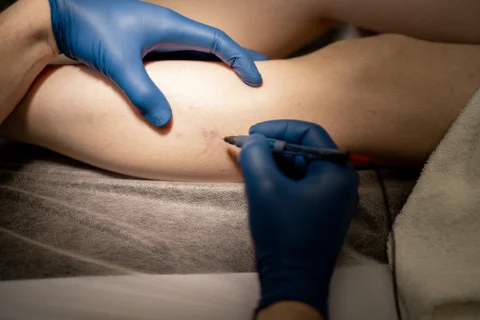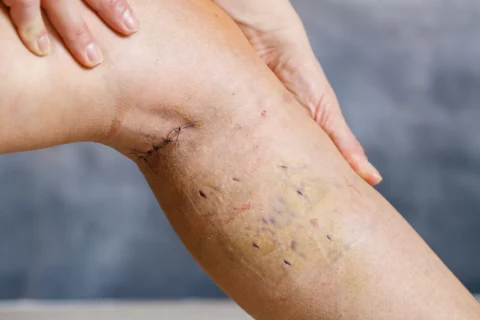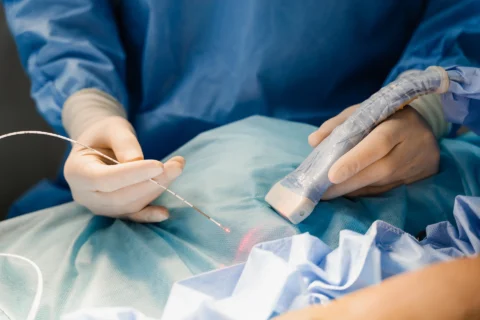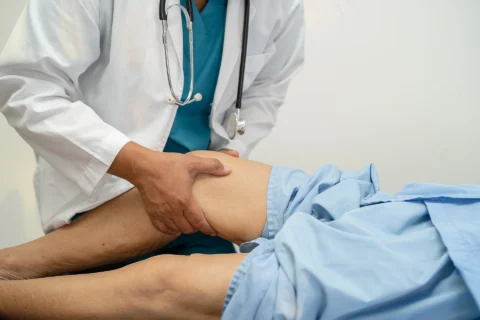Varicose veins are more than skin-deep; these are not just raised purple and blue veins on the legs and feet. Rather, these can be an indication of chronic venous insufficiency (CVI), a vascular health condition in which the veins have a problem with pushing “used” blood back to the heart and lungs for reoxygenation. It most often affects the legs, but can sometimes occur in the feet and the arms.
So how costly are chronic venous insufficiency treatments? Depending on your specific needs and the appropriate procedure, the price can go as low as $400 or as high as $5,000. The price also varies according to the location of the clinic and the expertise of the team handling the aesthetic procedures.
How Much Do Varicose Veins Treatments Cost?
Every patient is unique. Thus, the cost of treatment is often variable depending on where and how severe your spider and/or varicose veins are, the amount of medicine required, the number of injections, follow-up appointments, the vein clinic’s location, and whether or not the procedure will be administered by a doctor or nurse.
| Procedure | Average Cost |
| Sclerotherapy | $400-$600 per session |
| VenaSeal | about $4,925 for one leg |
| Venous Compression Therapy | $1444-$2711 for 10 weeks |
| Radiofrequency Ablation (RFA) | $3,000-$5,000 |
If ever your veins are only a cosmetic concern, insurance might not cover the treatment. Although if you have a documented history of venous disease and its symptoms, your insurance might be able to cover procedures that correct the underlying causes, not necessarily to close varicosities and veins that are already present on your skin’s surface.
If for any reason your insurance company decides not to cover your chronic venous disease procedure, consult with your vein treatment specialist about possible payment plans.
Chronic Venous Insufficiency Treatment Options
If you’ve been noticing your legs starting to drag as your day goes on and your ankles have been swelling, especially after a long road trip or flight, you might be suffering from chronic venous insufficiency. Luckily, the Vein Center Doctor offers the following treatment options so that you can stop these symptoms from interfering with your day-to-day activities:
1) Sclerotherapy
Spider veins and varicose veins are characterized by valves that become weak or impaired due to different factors like obesity, aging, hormone changes, and injury. As a result, the flow of blood isn’t directed towards the heart but rather the other way around – blood is collected in the legs and other parts of the body.
Sclerotherapy is a minimally-invasive treatment that involves a sclerosing agent solution that is directly injected into the diseased vein. This results in scarring and sealing off of the damaged portion. During the injection process, blood flow continues as it is rerouted through healthier veins. The collapsed vein is then reinvested into the local tissue. As time passes, the vein vanishes. Surgery is not needed since the body absorbs the veins on its own.
For most patients wanting treatment for their venous conditions, this procedure is an effective and safe option. Most people, excluding pregnant women and patients with special conditions, can be safe candidates for sclerotherapy.
2) VenaSeal
VenaSeal is an advanced non-surgical procedure that uses an FDA-approved medical adhesive or “glue”. When performing this treatment, the vascular specialist evaluates the leg vessels of concern and applies a local anesthetic.
A minute after creating a puncture in the skin, the specialist inserts the VenaSeal device in order to close the targeted vein. Afterward, the flow of blood changes routes into other veins.
Meanwhile, a VenaSeal procedure entails minimal discomfort and no downtime. Moreover, the patient does not need to wear compression stockings after the procedure.
3) Venous Compression Therapy
Compression therapy is often used for the improvement of blood flow in the lower extremities. Essentially, your healthcare provider will firmly wrap the affected leg (the leg with a damaged vein) with a compression bandage to encourage blood to flow in the direction that leads to your heart.
Furthermore, the discomfort brought about by varicose veins can be managed by wearing compression stockings. The stockings can temporarily reduce inflammation and swelling in the legs, as well as the size of the varicose veins.
4) Radiofrequency Ablation for Varicose Veins
RFA or radiofrequency ablation is a modern-day treatment for vein conditions, and it makes use of radiofrequency technology. Endovenous ablation refers to a doctor using radiofrequency energy (this is different from laser energy) to heat up the affected vein, therefore damaging it and triggering the natural healing response of the body to repair it.
Expect your legs to feel lighter after the procedure. Vein ablation has zero to little downtime, although you may notice bruises on your skin for 1 to 2 weeks.
Conservative Measures to Increase Blood Flow

1) Exercising
Do mild to moderate exercises, such as walking, for 30 minutes every day. This is good for your physical and mental health.
2) Consuming Omega-3 Fatty Acids
Every week, we recommend that you eat 2 servings of omega-3 fatty acids to improve blood circulation and your cardiovascular health. A high-quality supplement can be considered if you are unable to keep up with the suggested amount. Examples of food rich in omega-3 fatty acids are kale, walnuts, cod liver oil, pumpkin seeds, flaxseeds, and fatty fish such as salmon, sardines, and tuna.
3) Getting a Massage
A massage stimulates the flow of blood and gives the body relief and relaxation. Similar to exercise and walking, a massage aids in the movement of lymph fluid and blood along the limbs. This encourages good blood circulation.
4) Stretching
Doing a few basic stretches a couple of times a day prevents circulation issues caused by sitting for long periods of time.
5) Drinking More Water
Drinking water doesn’t just quench your thirst. It also stabilizes your heartbeat and promotes healthy circulation. Generally, water consumption of women must be around 95 ounces while it should be around 131 ounces a day for men.
6) Minimizing Alcohol Intake
It’s fine for the body to consume a moderate amount of alcohol – meaning, not more than 2 drinks. Arteries can be hardened due to drinking more than the moderate amount, causing improper blood flow.
7) Managing Stress
Most vascular diseases are caused by stress, also known as the “silent killer”. Overall health, which includes healing process and circulation, is attained whenever a person knows how to properly manage his or her stress. Enough sleep, socializing with friends, hobbies, and a healthy diet are some ways to manage stress.
8) Elevating Legs
Elevating the legs contributes to the betterment of most patients with varicose vein disease. A 20-minute leg elevation session relieves symptoms from standing and sitting which can cause blood to pool in the lower body. You may lay on the couch, floor, or bed, as well as place several pillows under your legs. The legs should be about the same level as your heart, with the feet at a higher point.
Causes of Chronic Venous Insufficiency
1) Genetics
There is a high probability for someone to develop certain vascular conditions such as CVI or varicose veins when these are found in the family’s medical history.
2) Trauma
Damages to the body’s internal areas can be exacerbated by injuries like deep vein thrombosis.
3) Hormonal Imbalance
The ability of the valves to prevent reverse blood flow is affected by specific types of hormones (e.g., progesterone and estrogen) that can cause the veins to dilate.
4) Weight Gain
Excess body weight adds more pressure on the lower body’s valves. Thus, these valves would need to work twice as hard to pump blood upwards towards the heart. These may then wear out faster and make blood flow more difficult.
5) Stress
More stress, more pressure: Stress contributes to the habits that exacerbate the symptoms of chronic venous disease.
6) Pregnancy
Pregnancy changes the hormonal levels of a woman and can often lead to weight gain. Moreover, pregnant women are prone to high blood pressure which causes smaller veins to swell.
7) Age
Older adults have a higher vulnerability to deep vein thrombosis, weaker valves, and high blood pressure as compared to young adults.
Symptoms
Weak valves slow down the rate of blood flow in our bodies and can sometimes cause the flow to go backward (away from the heart) – pooling in the legs and feet. This is known as “reflux” and can manifest in the following symptoms:
- Cramps
- Spider and/or varicose veins
- Leg pain
- Leg itchiness
- Restless legs syndrome
- Skin discoloration, often near the ankles
- Skin infection (cellulitis)
- Slow-healing wounds
- Leg ulcer
Is It Possible to Lose a Leg From Venous Insufficiency?
Yes, it is possible to lose a leg; however, it is an extremely rare occurrence. You have to understand the stages of vascular disease first in order to know how exactly. The risk of amputation may stem from venous insufficiency, a progressive illness.
As venous insufficiency progresses, you experience different symptoms at each stage. As you go forward, the disease becomes more severe. Bear in mind, however, that you may not necessarily have all the symptoms.
As mentioned, the earliest signs of CVI are varicose veins. This is when unsightly veins appear due to weakened valves and vein walls. And once these get worse, you might feel leg pain akin to cramps and/or heavy legs. You might also observe swelling in your feet and ankles as fluids collect in these areas.
If you fast forward a bit, you might develop stasis dermatitis and skin discoloration. The final symptoms to appear are called venous stasis ulcers, open wounds that are difficult to heal.
When left untreated, these venous ulcers expand and may become infected. It is also possible that the surrounding tissues die and thus lead to severe cases of gangrene that increase your risk of amputation.
A leg amputation might add another $20,000 to $60,00 to your hospital bill. Don’t wait for a venous ulcer to appear. Contact your healthcare provider as soon as you see the earliest signs of vascular disease.
Meet With A Vein Specialist at Vein Center Doctor

Living with spider veins and varicose veins should be a thing of the past. Vein Center Doctor offers a range of treatments for chronic venous disease and other vascular health conditions – all at a reasonable price and with a comprehensive insurance plan.
Our procedures are pain-free, have zero downtime, and don’t require the presence of a surgeon. Start your journey to clear, smooth, and vein-free skin and book a consultation with us today.

